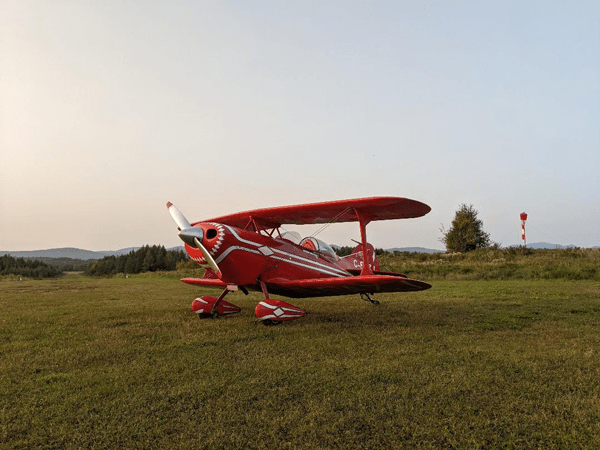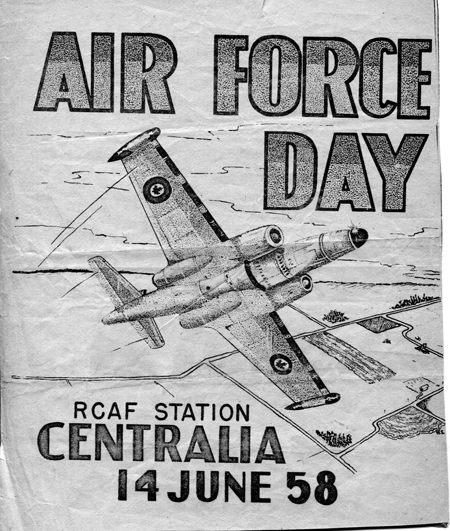For many years now I have been thinking of what obstacles there are when getting into general aviation. I often ask colleagues and visitors to the airport what the obstacles are, and do they have the incentive and drive to get past them? Ninety percent of the time the answers are “money” and the balance is “time.” You can’t deny that both are good reasons. Invariably though, their ideas of what the cost is can be very inflated, and their notion of how long it takes to fly can be exaggerated as well. Of course, if you want to learn how to fly quickly and get all your licenses, it can be a substantial sum. Getting all the information about how to do that can also be stressful for young and old. One of the obstacles is just getting past the closed gates and asking the right questions to the right people. This is where I think a lot more can be done, at a local level, to help encourage the public to visit their local airport and hopefully speak to people in the field who can provide the right answers to their questions. This starts with keeping the gates open and offering up your knowledge.
I enjoy listening to EAA’s The Green Dot podcast. Recently I came across one about the Lakeland Aero Club (associated with a local high school in Florida — physically located at the airport!) which has instituted an educational program from private donations and aviation mentors, offering many students (from 18-24) the chance to learn how to fly, build, and restore and maintain airplanes, all with the goal of them eventually developing their interest in aviation to enter the field. Specifically, Mike Zidziunas (who, for ease, is often just addressed as Mike Z.), its director, said that many youths are “afraid to ask for help” about how to go forward in aviation.
He said, when initially forming the program, that it took them awhile to see what worked and what didn’t in today’s learning environment. Mistakes were made. It was a steep learning curve. He learned that mentoring worked — “that you can’t just throw money from the mountaintop” and expect results. He noted that EAA was “the village that could support them where the local schools and counselors weren’t briefed enough in the field to help.” I had that kind of help with the Air Cadets — a gigantic plus!
I won’t go into great detail about what he said during the interview (you can check that out for yourself), but the subjects he did touch on about getting our youth involved made a lot of sense.
The basic question is “How do we, as a community, foster an interest in aviation and promote flying?” I think Young Eagles has gone a long way to open doors and to encourage youths to think of aviation as a career, and, as a byproduct, a hobby and passion to pursue.
More than 2.3 million kids have been given Young Eagles flights. As well as EAA’s Young Eagles program working well for years in Canada, our Canadian COPA program, Discover Aviation (formerly, COPA for Kids) has flown 36,000 young people. I talked recently to one such pilot (a colleague) at my company on a flight who explained how he started. He reflected that a trip out to the local airport with his high school for an airplane ride cemented the idea of him becoming a commercial pilot years after that field day. It wasn’t an obvious choice for him. That day however, the pilot gave him the front seat and let him have the controls for a few minutes. That made enough of an impression on him so that when he was later looking for a career, he returned again and again to that day in the airplane when he was “in command, making the airplane move to his inputs.” At that crossroad in his life (after graduation) he was either considering a career in heavy machinery or shipbuilding. Going out to the local airport and then asking about lessons changed all of that — when those distant memories of first flying as a co-pilot were rekindled, and his training was started. Only then did he rediscover that thought of becoming a pilot could be a possible career choice. It is not always a slam dunk scenario of knowing where you want to go in life. It has to be fostered. Like a fire, the embers need to be nurtured, fed with some oxygen to glow, until the radiated heat starts the first flames.
The point I am making is that in order for our youths to discover flying, the mental (not metal!) fences around airports and their gates need to be left open for people to ask questions about the professions available in aviation and to let their curiosity take them deeper. The airplanes need to fly! We need to get the word out, somehow. Perhaps the youths of today are more introverted than we were? Another younger colleague differed with that notion. He said they just use social media differently to get the same answers. There are many more sites out there other than YouTube. We, as a community, have to go where the new ones are gathering, or, at a minimum, get those people into the fold to spread the word via these mediums. The same is true for finding a job today. If you’re not on LinkedIn then you might miss the boat when word goes around about who’s hiring. It is hard to adapt to change. I’m the first to recognize that, but if Reddit, X, TikTok, Instagram, Facebook, and many others are where we need to spread the gospel, then let’s do it! These are all places where we’ll first grab their attention.
I find that a lot of the info this newest generation finds is first unlocked at their fingertips on the internet. If I’m using YouTube a lot to troubleshoot car problems, then you can bet they are going to the quick chat sites to learn about what others are doing, flying. It’s trendy and I suppose it’s efficient, too. It used to be that we’d go out to the airport on a bike to watch the traffic or wash the airplanes for some flying time. Times have long since changed. When was the last time you saw a kid show up on a bike? If it doesn’t look like it’s doable from in front of the screen, then they probably won’t show up like we did. We, as proponents of GA, have to “sell it” and if that means posting and pumping it up as much as we can, so be it.
Another way to keep the doors open is to have one. A community hangar or clubhouse provides the gathering point for local “drop-ins” to ask those questions, especially the older ones. This is, more often than not, the terminal building on a town’s airport which doubles as both a place to hang out and a place to learn more about aviation. It’s even better to have a local chapter/flying club, with a building, outside of the airport’s management, where the real flyers gather. I have been fortunate enough over the years to see many such places and have strongly voiced my opinion at our local EAA chapter to build one.
Our biggest obstacle is where to do that. A viable location in Montreal has been lacking for years. The private airports are not open to subdivision, and the towns that run the public airports aren’t either. A space to build is hard to find. Some leases are possible, but those airports are so far out from the city that it isn’t an easy commute. Even with those obstacles, I still feel it is integral to the chapter’s survival so that a new generation of builders and flyers can pick up the reins from the ol’ timers. In the meantime, we’ve at least secured the cooperation of the Montreal Aviation Museum to help us host a monthly meeting that’s “at a minimum” in an aviation environment, surrounded by airplanes, shops, periodicals, and memorabilia — to me, a big improvement over our previous locale that was on a college campus far removed from anything airplane-related. The young people were there, they just weren’t in a position to spend time there listening to lectures if they didn’t know a thing about what was being presented. In recent years, few students (if any) knew of our club’s meetings. I suppose they did, at one time, because of an aircraft maintenance program, where I once studied being housed in the same building where the chapter met. But, now that that program has long since stopped, we were left in a building, on a campus, that had little to do with airplanes and maintaining them. The pandemic also had a big part in suspending meetings with some preferring to meet online instead of in-person.
Art: BNP 0424 John – MAM lobby.jpg Caption: EAA Chapter 266’s new presentation lobby for end-of-month meetings at the Montreal Aviation Museum’s facility on MacDonald Campus, in Ste-Anne-de-Bellevue on the West Island. Equipped with an overhead projector hardwired into a podium and several other amenities, this locale should serve our group well for the foreseeable (immediate) future. Although meetings haven’t yet resumed post-pandemic, they are, at least now, possible in an aviation-themed environment.
Airport days and breakfast fly-ins are also a way to get big numbers out to the airport. EAA Chapter 613, south of the border in Vermont, has had big success with their regular pancake breakfast held every end-of-month Sunday, at again, the club’s hangar on the airport grounds. Of course, their success is also driven by a few select individuals who’ve devoted great blocks of time to make their club thrive with other incentives like the Ray Aviation Scholarship program and a maintenance expert who’s offered countless hours coaching future mechanics and pilots on how to “make it” in aviation.
The bottom line is that there are many forces against flying and only few for it. The public, in general, see it as a luxury. It needs to be sold as part of the country’s infrastructure. It is an asset, not a liability. A runway is another means to access a town, efficiently and securely. When it’s gone, the road is the only way in. Those can be washed-out, blocked, sunk…you name it. Just recently, while steadily working away in the shop, a reporter came over the radio waves to announce that a local “long-time” councilor at a border airport was putting forward a motion to cease subsidizing the local airport for runway operations, as that councilor felt it was “high time that the public stop subsidizing this tax-sucking entity” and that the public was due some “respect” in halting it. I sighed when I heard that and assumed that this politician had never been up in a small aircraft, circled his house, or seen the enthusiasm and joy that the airport brought to people’s lives during their Father’s Day breakfasts, or its economic impact for the number of pilots it trains every year. If we are going to keep the skies free and little airplanes in the air, we are going to have to make a bigger effort at getting the youths out there and the people that fund the infrastructure and make the decisions take a closer look at our activities on the other side of the fence… on the airside of the airport.
John Wyman, EAA 462533, Chapter 266 Montreal, is a passionate aviator. When he isn’t in the saddle at the airline, he can be found out at the airfield doing any number of things. He likes to fly gliders, practice aerobatics, work on airplanes, and fix stuff.
Post Comments
Discover more from reviewer4you.com
Subscribe to get the latest posts to your email.





